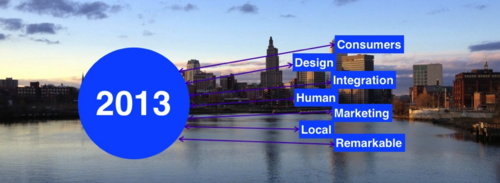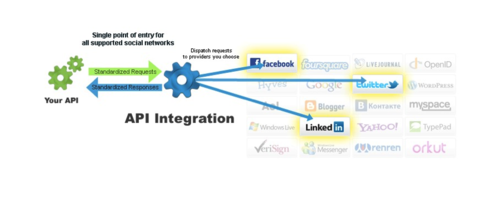4 Ideas Real Estate Marketers Should Capitalize On in 2013
 The last 12 months have seen plenty of changes in online marketing. From multi-screen devices and responsive web design to the proliferation of image-rich social networks and the shift away from single-platform marketing, technology and consumer consumption have given rise to a host of new tactics. Each year offers up different challenges in providing value for the consumer. Here are four ideas that real estate marketers should keep in mind as they dive into 2013.1. The best response is a quick response.Real estate marketers aren’t known for their ability to respond quickly to new marketing opportunities. While the urge to get everything perfect before interacting online may feel sensible, in reality, news cycles and consumer interest move too rapidly. It’s no longer reasonable to plan a marketing campaign several months out and assume your idea will still be relevant. These days, done is better than perfect.The success stories of 2013 will not come from the traditional marketers who move like oceanliners. Instead, they’ll come from be nimble organizations that understand marketing, PR, advertising, events and customer service are all serving the same goal: engaging and delighting consumers.2. The consumer is more powerful than you are.Consumers are more connected than ever and more able to verify, quantify and vote through their devices, non-stop and in real time. When Mad Men ruled the world of advertising, it was a common notion that consumers didn’t know what was good for them. Now, your consumers are your best sales force due to the power customer reviews, un-curated rating sites and online group discussions that expose the public perception of your brand.Today, everyone is a marketer: you, your team and your customers. Make sure you align your technology and content creation to allow everyone to participate in your brand conversation.3. Integration is the way of the future.Customers in 2013 expect and demand marketers to be everywhere, which requires you to have technology that plays well across the digital landscape. The age of the closed proprietary system is over: APIs, plugins and data integrations are necessary for brands that want to engage consumers wherever they are and on whatever device they happen to use.
The last 12 months have seen plenty of changes in online marketing. From multi-screen devices and responsive web design to the proliferation of image-rich social networks and the shift away from single-platform marketing, technology and consumer consumption have given rise to a host of new tactics. Each year offers up different challenges in providing value for the consumer. Here are four ideas that real estate marketers should keep in mind as they dive into 2013.1. The best response is a quick response.Real estate marketers aren’t known for their ability to respond quickly to new marketing opportunities. While the urge to get everything perfect before interacting online may feel sensible, in reality, news cycles and consumer interest move too rapidly. It’s no longer reasonable to plan a marketing campaign several months out and assume your idea will still be relevant. These days, done is better than perfect.The success stories of 2013 will not come from the traditional marketers who move like oceanliners. Instead, they’ll come from be nimble organizations that understand marketing, PR, advertising, events and customer service are all serving the same goal: engaging and delighting consumers.2. The consumer is more powerful than you are.Consumers are more connected than ever and more able to verify, quantify and vote through their devices, non-stop and in real time. When Mad Men ruled the world of advertising, it was a common notion that consumers didn’t know what was good for them. Now, your consumers are your best sales force due to the power customer reviews, un-curated rating sites and online group discussions that expose the public perception of your brand.Today, everyone is a marketer: you, your team and your customers. Make sure you align your technology and content creation to allow everyone to participate in your brand conversation.3. Integration is the way of the future.Customers in 2013 expect and demand marketers to be everywhere, which requires you to have technology that plays well across the digital landscape. The age of the closed proprietary system is over: APIs, plugins and data integrations are necessary for brands that want to engage consumers wherever they are and on whatever device they happen to use.
Nowhere is this more evident than in social media integrations like Facebook comments and login (see an example here) that allow a tribe on one platform to more easily converse and interact on another. But the need for integration doesn’t end there. Choose your websites, CRM, analytics, email marketing and document management solutions because they are the best tools for the job, not because some company has checked the box to say they offer it.Need an example of this shift? Look no further than Microsoft Office. While Office used to be the de facto productivity suite, we now use a wide variety of tools to accomplish the same tasks: Evernote for note taking; Gmail for email; Keynote instead of PowerPoint; and, because you still love it, MS Word for word processing. Like your customers, you are in the driver’s seat and can choose what works best for you, on your terms.In the age of a billion channels and blogs and online videos, it’s not enough to be in the game. The spoils now go to those who are most interesting, those who can get our attention. That means that design and presentation matter more than ever. Not that the power of aesthetics is anything new; after all, great design has allowed companies with the best packaging to outsell their competition for generations. Today, however, the majority of new customers will first experience your business online, meaning your website design is the packaging that creates a relationship with your customers. Use the opportunity to engage and delight.2013 will bring more focus to imagery, design, video and interactive content. It will require real estate professionals to stop treating marketing as an afterthought and empower marketing teams that include talent from outside the industry who can create compelling content for Facebook, Google+, Instagram and whatever the next breakout network might be.This doesn’t mean you have to drop everything. It just means you have to take what you already do well and find ways to derive extra value from it. At Placester, that meant examining the issues people experience when launching websites and building a team to solve them. This process has resulted in the Website Factory, where we bring together photographers, graphic designers and engineers to help real estate professionals create a web presence that’s technologically sound, visually appealing, and above all, memorable. (Want to see the factory in action? Stop by our room at Inman Connect in NYC.)The next 12 months will be full of great change and amazing opportunity for real estate professionals. Implement these four ideas in your marketing strategy, and we promise you’ll #dominate2013.Seth Price is Director of Sales and Marketing at Placester, a Cambridge-based technology company specializing in building online marketing tools for the real estate industry. A 14-year veteran Internet marketer, Seth has consulted for leading B2B and B2C companies including: Metlife, BMW, Sony, Nationwide Financial, and Toys “R” Us. Connect with him on Linkedin
Today, however, the majority of new customers will first experience your business online, meaning your website design is the packaging that creates a relationship with your customers. Use the opportunity to engage and delight.2013 will bring more focus to imagery, design, video and interactive content. It will require real estate professionals to stop treating marketing as an afterthought and empower marketing teams that include talent from outside the industry who can create compelling content for Facebook, Google+, Instagram and whatever the next breakout network might be.This doesn’t mean you have to drop everything. It just means you have to take what you already do well and find ways to derive extra value from it. At Placester, that meant examining the issues people experience when launching websites and building a team to solve them. This process has resulted in the Website Factory, where we bring together photographers, graphic designers and engineers to help real estate professionals create a web presence that’s technologically sound, visually appealing, and above all, memorable. (Want to see the factory in action? Stop by our room at Inman Connect in NYC.)The next 12 months will be full of great change and amazing opportunity for real estate professionals. Implement these four ideas in your marketing strategy, and we promise you’ll #dominate2013.Seth Price is Director of Sales and Marketing at Placester, a Cambridge-based technology company specializing in building online marketing tools for the real estate industry. A 14-year veteran Internet marketer, Seth has consulted for leading B2B and B2C companies including: Metlife, BMW, Sony, Nationwide Financial, and Toys “R” Us. Connect with him on Linkedin
Saturday, June 22, 2013
4 ideas of RE Marketers should capitalize on in 2013
Subscribe to:
Post Comments (Atom)
No comments:
Post a Comment